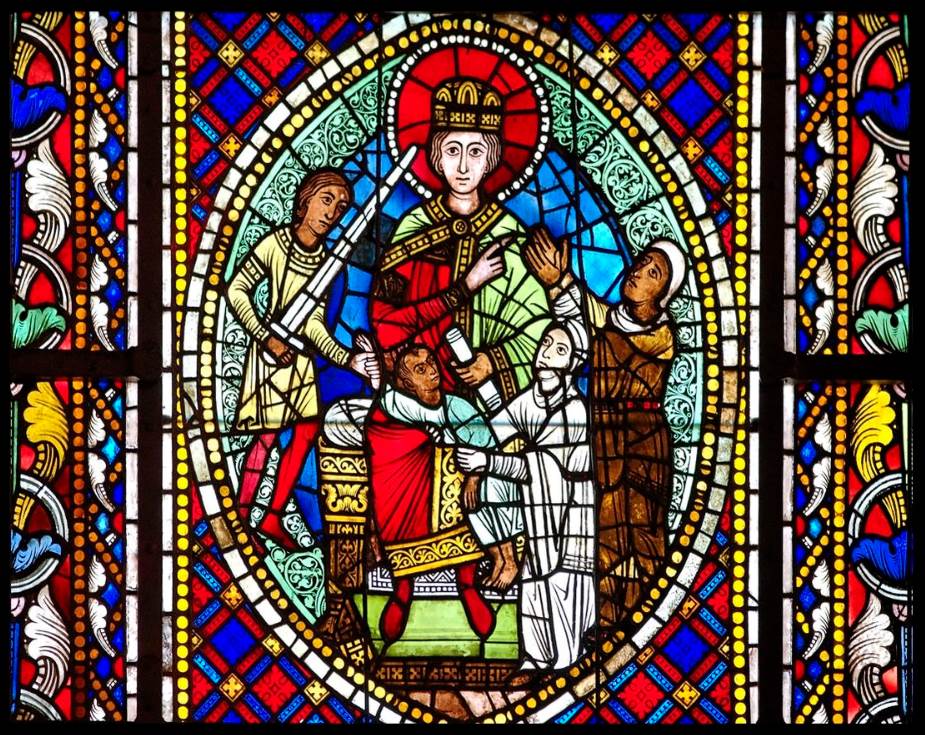The Dark Ages is a term that emerged in the 14th century to describe the cultural decline of Western Europe following the Fall of the Western Roman Empire.
This decline included the stop of monumental construction projects and the creation of artworks.
Europe gradually crawled out of this dark hole and as certain regions such as the Merovingian Kingdom became more prosperous, a period referred to as the pre-Romanesque era emerged
Starting around 1000 A.D., what is now referred to as Romanesque architecture and artworks started to be produced again before being replaced by Gothic Artworks a couple of centuries later.
The influence of Byzantine architecture and art was still very high at the beginning but this gradually changed when Romanesque artists started creating a distinctive type of Romanesque art.
Murals, tapestries, illuminated manuscripts, sculptures, and stained glass windows are some of the famous Romanesque Artworks you can discover in the list below.
1. Bayeux Tapestry
The Bayeux Tapestry is without a doubt the most fascinating Romanesque artwork that was ever produced. This embroidered cloth has a length of about 70 meters (230 feet) and a height of 50 centimeters (20 inches). It depicts various scenes related to the Norman Conquest of England which started in 1066.
It starts with the invasion of William the Conqueror and ends with the showdown between the Norman invaders and the Anglo-Saxon army led by Harold II at the battle of Hastings. We don’t know exactly who made the tapestry, but it’s fairly certain it was produced in England. It is, however, on display at the Musée de la Tapisserie de Bayeux in Normandy.

2. Pórtico da Gloria of Santiago Cathedral
The Pórtico da Gloria or “Portico of Glory” is the main gate of the Cathedral of Santiago de Compostela in northwestern Spain. It was commissioned by King Ferdinand II of León in the 12th century and completed by a mysterious artist who art historians now refer to as “Master Mateo.”
The renowned Romanesque sculpted earned 100 gold coins every year for carving this masterpiece of the Romanesque era between 1168 and 1188. We know these dates because they are carved on a stone inside the cathedral. Unfortunately for the sculptor, it took much longer as it was only completed in the year 1211.

3. Apse of Sant Climent de Taüll
The Apse of Sant Climent de Taüll is a Romanesque mural that was painted on the apse of the church of Sant Climent de Taüll. This church is located in the Pyrenees mountains in the Catalonia region of northeastern Spain. Today, a replica of the original decorates the apse of the church.
The original fresco was probably completed in the early 12th century by another mysterious artist known as the Master of Taüll. It integrates various scenes from the Bible into one monumental work of art. The original fresco was removed between 1919 and 1923 and is now on display at the Museu Nacional d’Art de Catalunya in Barcelona.

4. Shrine of the Three Kings
The Shrine of the Three Kings is one of the most amazing Romanesque artworks produced and the epitome of Mosan art. This is the name of art that was produced during the Romanesque era in the Meuse Valley which covers parts of Wallonia in modern-day Belgium and France.
This gilded reliquary is located above the High Altar of Cologne Cathedral and is believed to contain the bones of the Biblical Magi. It took 45 years before the triple sarcophagus was completed between 1180 and 1215 and large parts are credited to the renowned goldsmith Nicholas of Verdun (1130-1205).
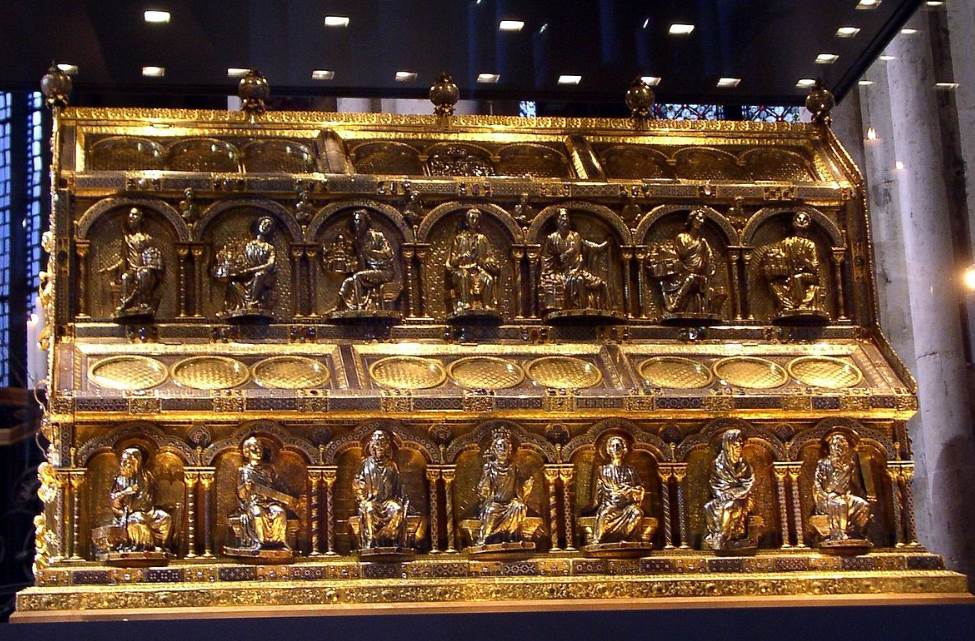
5. Madonna and Child
Madonna and Child is the title of a painting that is credited to famous Italian artist Berlinghiero, the leading artist in the Tuscany region in the early 13th century. He was from the Tuscan city of Lucca and was highly influenced by Byzantine art, reflected by the gold decorations that make up the background.
This tempera on wood painting is one of the many Italo-Byzantine artworks produced by Berlinghiero and which he signed with “Berlingerius me pinxit.” It was influenced by artworks that came from Constantinople after the city’s fall in 1204. It’s currently on display at the MET in New York City.

6. Southern Apse from Pedret
The Southern Apse from Pedret is another fresco that was produced in the Catalonia region of Spain. It was probably completed in the late 11th and early 12th centuries by an artist that can only be described as the “Master of Pedret, a reference to the location of the Church of Sant Quirze de Pedret.
The fresco was inspired by works produced in Italy at the time, especially in the Lombardy region. As most artworks produced during this period in history, it depicts several Biblical stories, including the Wise and Foolish Virgins parable. The original fresco was also moved to the Museu Nacional d’Art de Catalunya between 1919 and 1923.
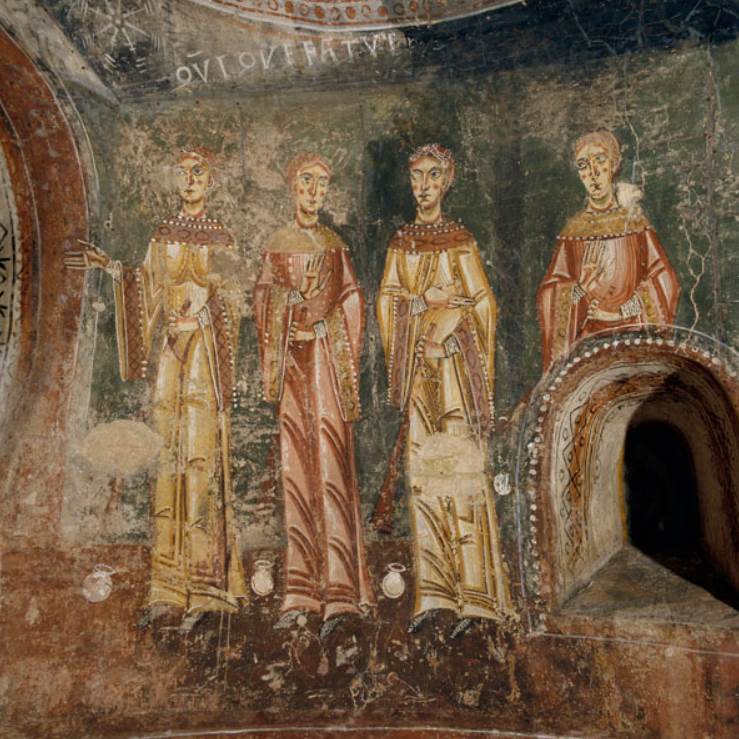
7. Baptismal Font at St Bartholomew’s Church in Liège
The Baptismal Font at St Bartholomew’s Church in Liège is another masterpiece of Mosan art (if it was produced here). This bronze baptismal font was created between 1107 and 1118 and still stands in St Bartholomew’s Church in the city of Liège in modern-day Belgium today.
The baptismal font is credited to Renier de Huy, a renowned metalworker, and sculptor who was active in the 12th century. What’s remarkable is that Renier was only mentioned once in a document in 1125 as a goldsmith and was only credited with the work in the 14th century.

8. The Last Judgment at Autun Cathedral
The Last Judgment is the name of an amazing work of art that decorates the main portal of Autun Cathedral in the central part of East France. This amazing Romanesque church was completed between 1120 and 1146 and is renowned for its sculptures by Romanesque sculptor Gislebertus.
The French artist decorated the Tympanum f the main entrance of the Cathedral of Saint Lazare between 1120 and 1135. It’s considered to be one of the most original Romanesque Artworks ever produced. He sculpted stories of both the Old and New Testaments with a sense of detail that was unseen for numerous centuries.
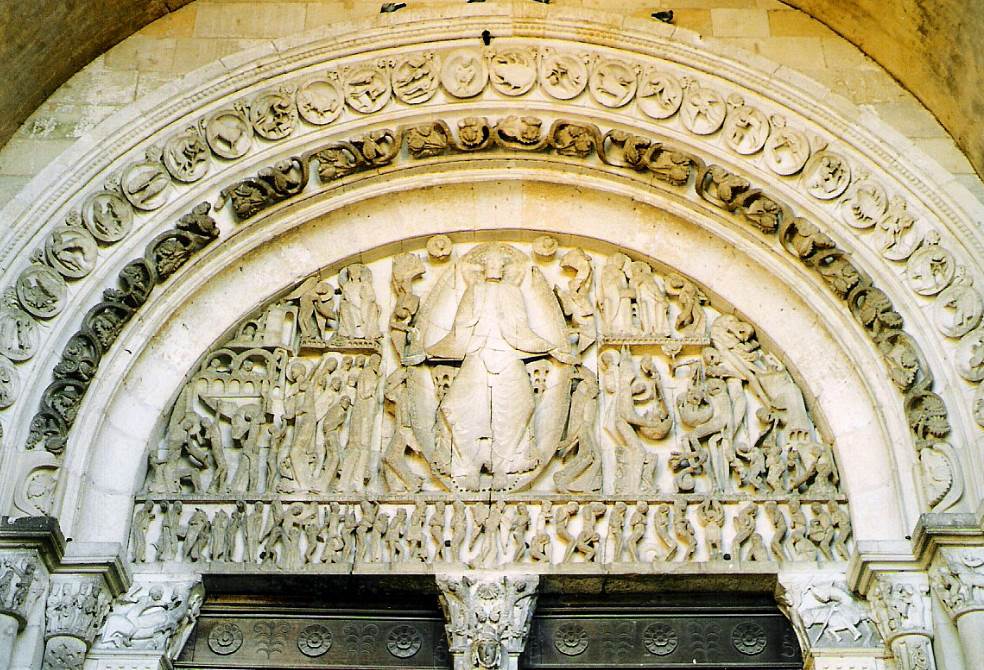
9. Stavelot Triptych
The Stavelot Triptych is another masterpiece of Mosan art and a highlight of artworks by goldsmiths during the Romanesque era. This portable reliquary was intended to hold fragments of the True Cross. It was completed around 1156 by an unknown artist.
It was named after the place it was produced, Stavelot Abbey in modern-day Belgium. The artwork is decorated with both gold and enamel and the outer wings were created in such a way that they can be closed and brought along easily. The work is part of the collection of the Morgan Library & Museum in New York City.
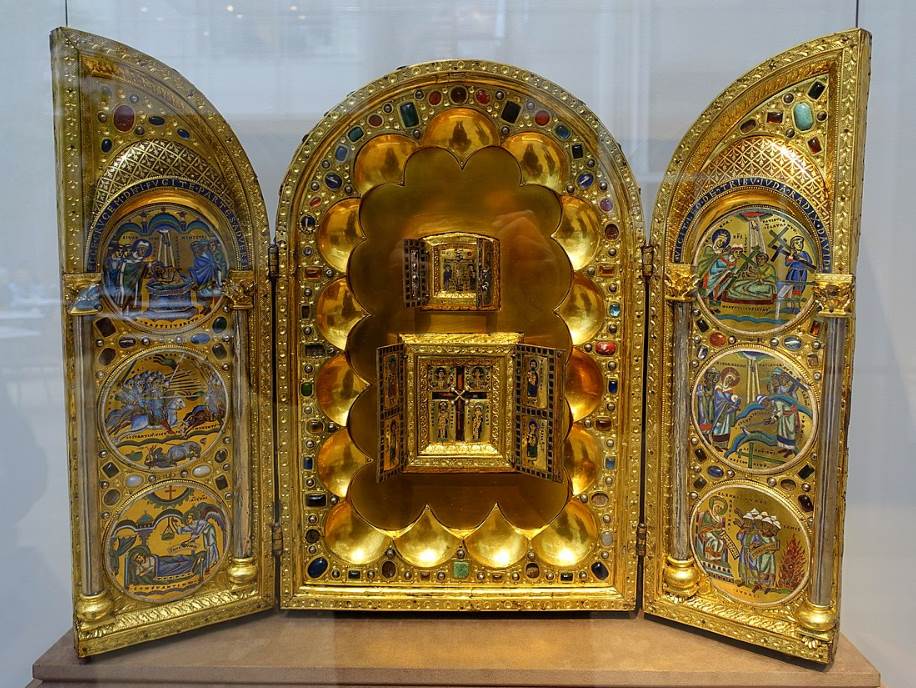
10. Judgement of Solomon at Strasbourg Cathedral
The Judgment of Solomon is one of the many amazing stained glass windows that decorate Strasbourg Cathedral, a building of which the first stone was laid in 1015. This particular stained glass window can be found in the north transept of the cathedral in the eastern part of France.
This incredible stained glass window is located above the crypt of the cathedral which is the oldest part of the building. They are adjoined by other stained glass windows that depict Biblical scenes and two rose windows that date back to the 14th century.
